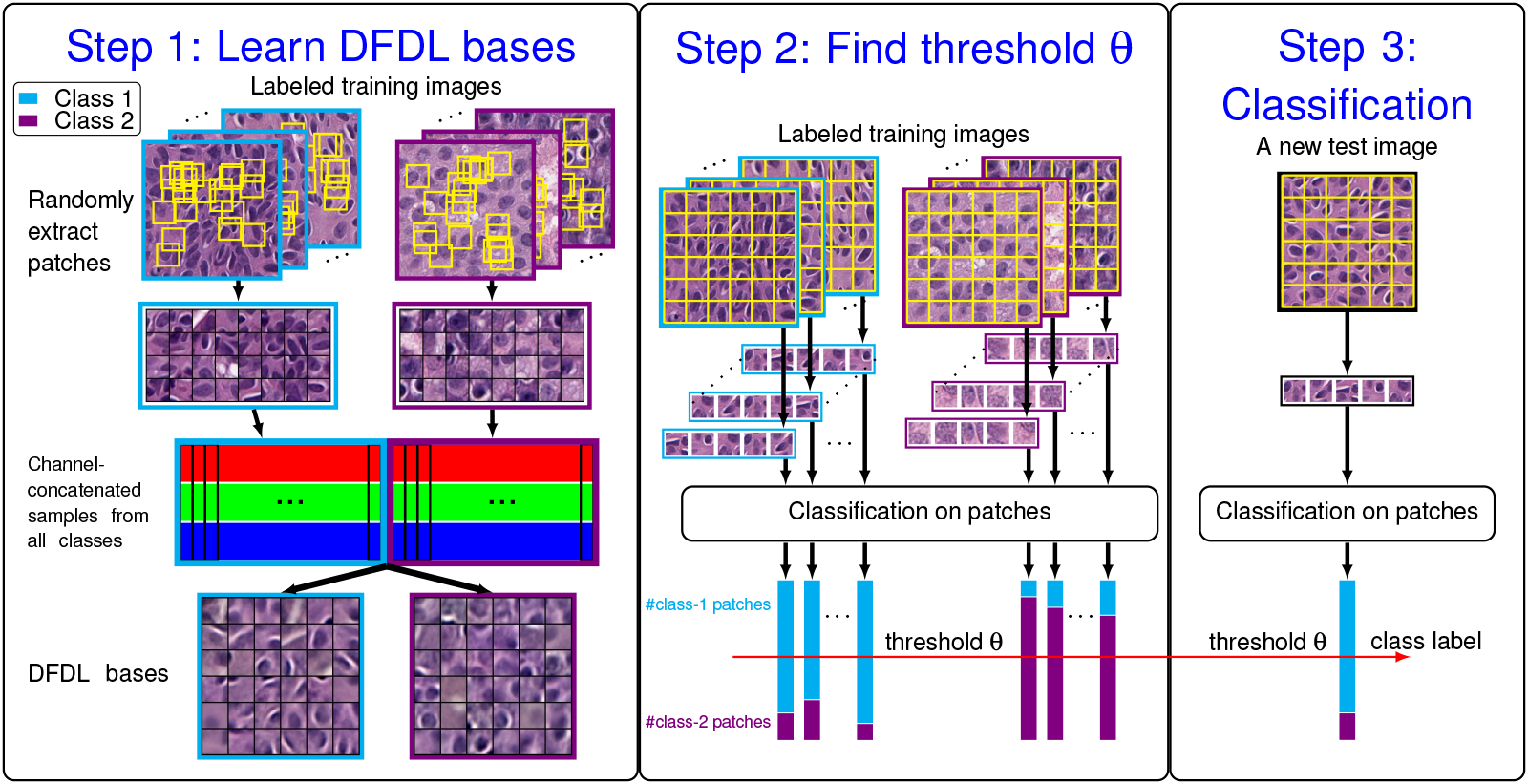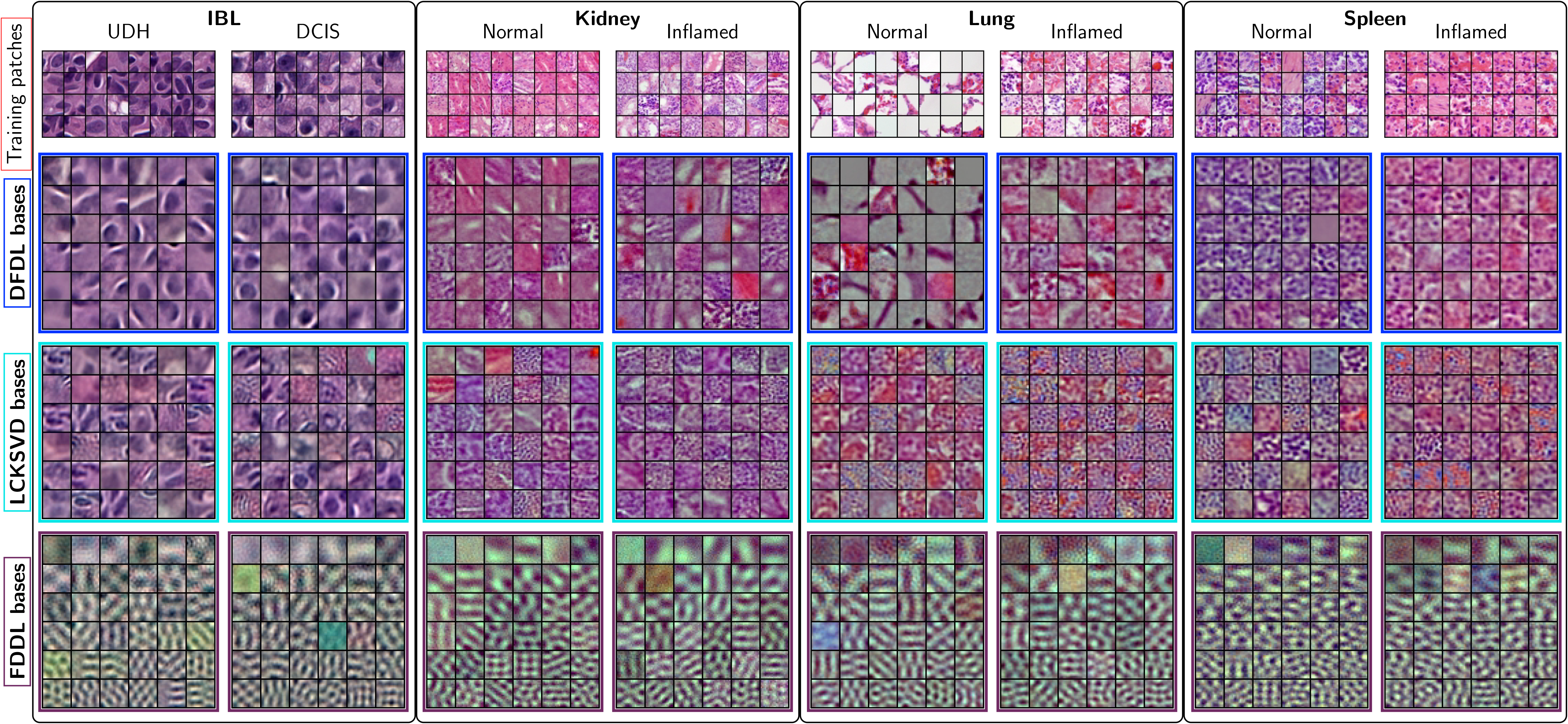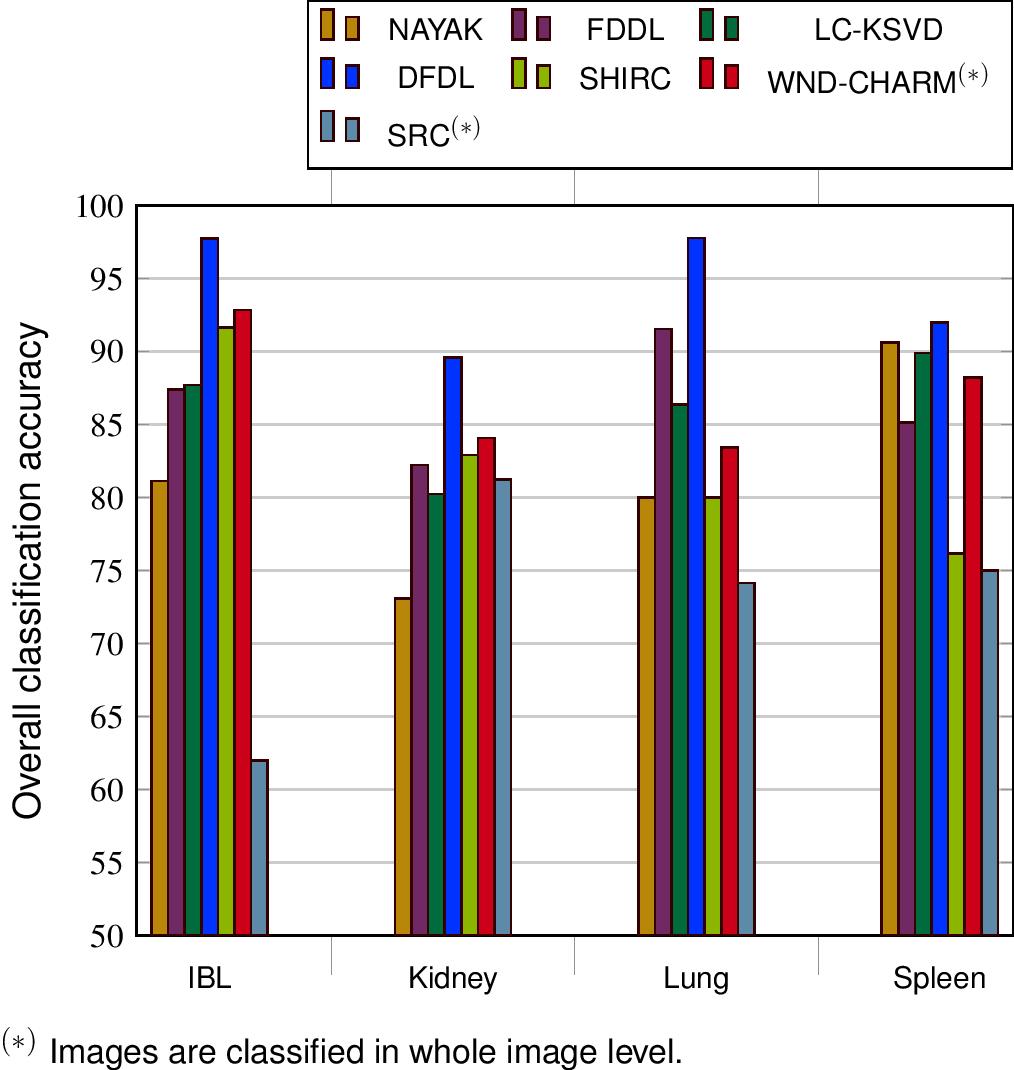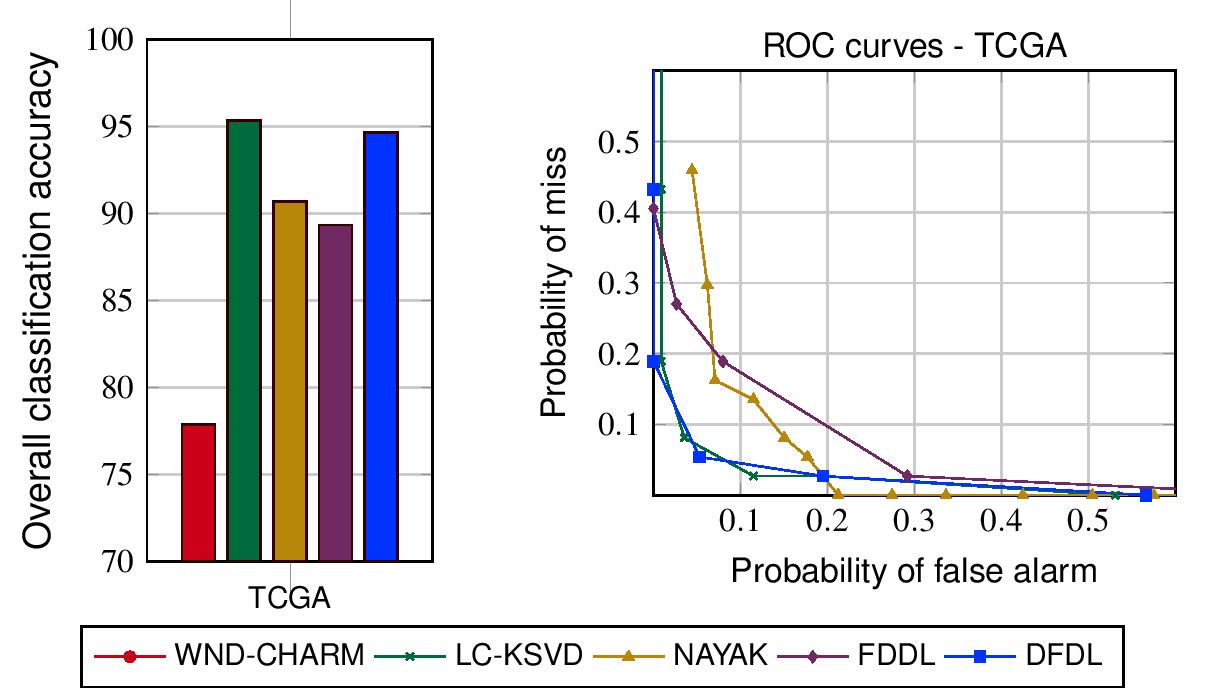Data Sets
Source Code
Source code for DFDL could be found at Mathworks File Exchange or Github.
Classification Procedure

Figure. IBL/ADL classification procedure [high resolution version]
Example Learned Bases

Figure. Example bases learned from different dictionary learning methods [high resolution version]
Selected Results


Figure. Overall classification accuracies of: left - IBL and ADL data sets; right - TCGA data set
Related Publications
Tiep H. Vu, H. S. Mousavi, V. Monga, A. U. Rao and G. Rao, "Histopathological Image Classification using Discriminative Feature-Oriented Dictionary Learning", IEEE Transactions on Medical Imaging , volume 35, issue 3, pages 738-751, March 2016. [arXiv]
Tiep H. Vu, H. S. Mousavi, V. Monga, A. U. Rao and G. Rao, "DFDL: Discriminative Feature-Oriented Dictionary Learning For Histopathological Image Classification", IEEE International Symposium on Biomedical Imaging (ISBI), Brooklyn, NY, USA, April 16th-19th, 2015. [IEEE Xplore] [arXiv] , [ISBI_poster]
Selected References
U. Srinivas, H. S. Mousavi, V. Monga, A. Hattel, and B. Jayarao, "Simultaneous sparsity model for histopathological image representation and classification," IEEE Trans. on Medical Imaging, vol. 33, no. 5, pp. 1163-1179, May 2014.
Z. Jiang, Z. Lin, and L. Davis, "Label consistent K-SVD: Learning a discriminative dictionary for recognition," IEEE Trans. on Pattern Analysis and Machine Int. , vol. 35, no. 11, pp. 2651-2664, 2013
M. Yang, L. Zhang, X. Feng, and D. Zhang, "Fisher discrimination dictionary learning for sparse representation,"in Proc. IEEE Conf. on Computer Vision , Nov. 2011, pp. 543-550.
N. Nayak, H. Chang, A. Borowsky, P. Spellman, and B. Parvin, "Classification of tumor histopathology via sparse feature learning," in Proc. IEEE Int. Symp. Biomed. Imag. , 2013, pp. 1348-1351.
N. Orlov, L. Shamir, T. Macuraand, J. Johnston, D. Eckley, and I. Goldberg, "WND-CHARM: Multi-purpose image classification using compound image transforms," Pattern Recogn. Lett., vol. 29, no. 11, pp. 1684-1693, 2008.